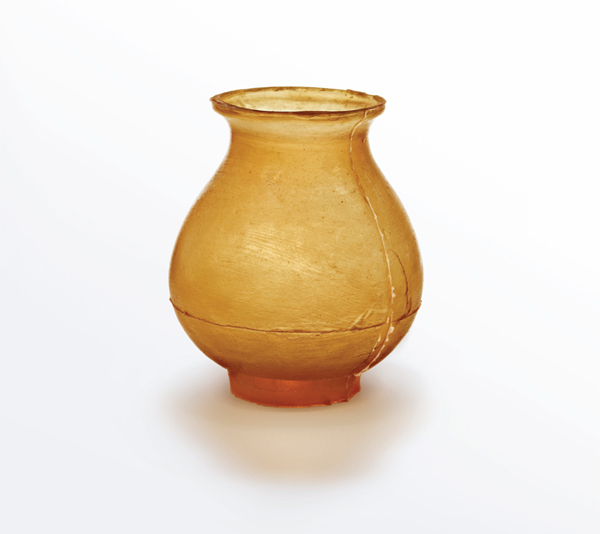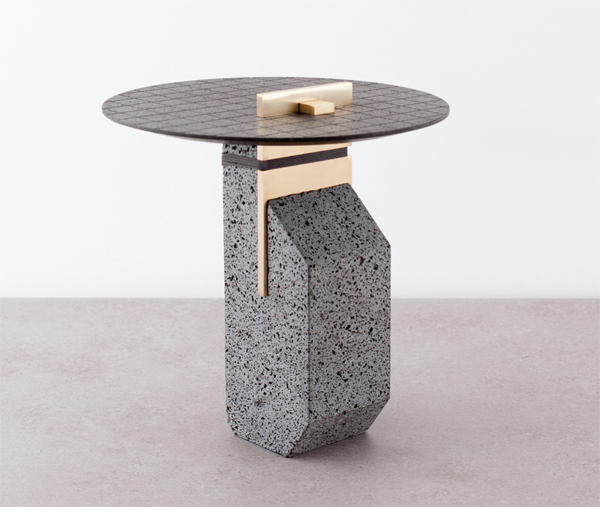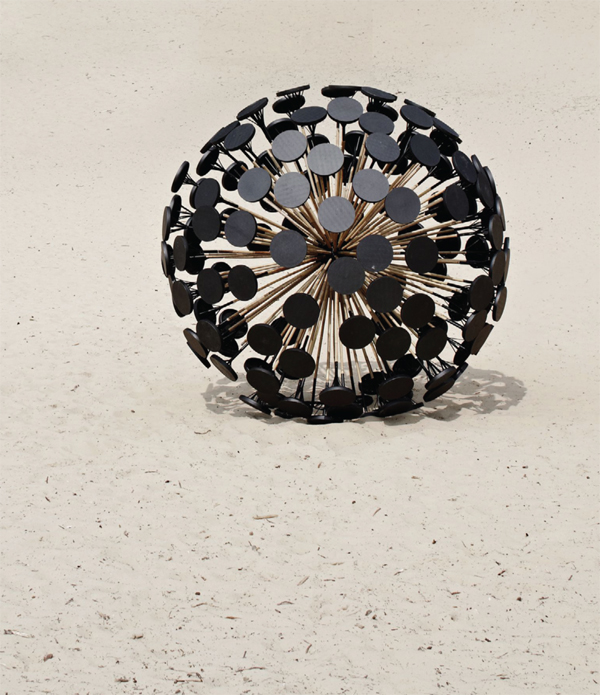
The art of design: Q+A with MoMA’s Paola Antonelli
Share
Above image, Revital Cohen & Tuur Van Balen, LIFE SUPPORT, 2008 Respiratory Dog.
Article by Gillian Serisier.
Undeniably one of the most important people in design, Paola Antonelli is MoMA’s (Museum of Modern Art) senior curator in the Department of Architecture and Design, as well as MoMA’s director of Research and Development and the former editor of Domus (1987-91) and Abitare (1992-94). More than a curator, Antonelli has been shaping the way museums collect and how design is viewed. Including video games and interfaces in the MoMA collection was radical just a few years ago and more recently @ and the Google Pin have also been included. She speaks with (inside) co-editor Gillian Serisier about new directions in design, the work she finds most interesting and her online project for MoMA: Design and Violence.
GS: There has been a paradigm shift in the way the world is viewing design; I think that has largely been driven by you.
PA: Oh, thank you.
What’s the most important thing that’s happening in design at the moment? That’s a huge question…
There are several things that are happening and they’re all connected, and it’s hard to pinpoint which one is most important, but I would say people have become much more responsible, buyers and designers and critics. I think everybody is taking themselves and the world around them more seriously. And, because of that, there are different forces that are influencing design among other practices, and it’s about trying to be more sustainable, more responsible, it’s about trying to be more aware of other human beings. So, the share economy, the idea of repairing and not wasting, the idea of having objects that are better made and last longer, all these different forces, that are part of the same sense of responsibility, have an effect on design or open source, you name it. But all of these sources are important and they also go together with a very strong sense of the importance of form, and I like that because it’s good to be politically correct and generous, but we’re still designers, so aesthetic expression is still important and aesthetic intention. I like the fact that in many cases you have great formal intention that goes together with great ethical intention, so [it’s] aesthetics and ethics really going together.
It’s still very solution driven though, isn’t it? It’s more reactive than proactive?
No, no. You know it’s very funny, I was just discussing [this] with a colleague of mine. I just gave her this book that is about speculative design, and that’s a very, very strong form and field of design that is nothing new, but is something that you could find in radical architecture and design in the 1960s and even all the avant-garde at the beginning of the 20th century. But there is a renewed interest in that, and that is design that is absolutely proactive. It’s design that is not solution orientated, but rather it is problem orientated. It’s about asking the question, ‘What if?’ and trying to understand what the possible consequences of our choices of today will be in the future. So I would say that it’s quite the opposite. Digital technology, and the kind of culture that it has spread, has brought about much more experimentation and speculation. I would say that solution orientated designers are almost rare to come by, [compared to] the ones that are hypothesising and experimenting.
Interfaces present a unique realm for experimenting; how do you think that’s shifting at the moment?
Well it’s interesting, because many designers and many people’s dream is to make technology disappear, right? So the idea that you should be able to take pictures without having a smartphone in between your face and the object that you want to shoot into a picture, not even a Google Glass, like nothing, so there is that idea that technology should disappear. But, at the same time, I would argue that sometimes interfaces are a pleasure: they’re a pleasure when they’re well-designed, they’re a pleasure when they are expressing, you know, when there’s something that gives us nostalgia, that gives us excitement.
So I think that interfaces should be taken more seriously and should be designed with more awareness of the effect that they will have. I’m thinking in particular of Barclays Bank. They were among the first automatic teller machines. At some point – you know, when things are out of order, the machine is offline or it’s out of money – they started doing some really nice small animations that would make it so that, instead of being just frustrated and angry, you would have a smile about the fact that something was out of order. So interface is everything that facilitates the communication between us and machines. It doesn’t necessarily have to be clear and functional, sometimes it can be more expressive as if it were more of a space.
You’ve told Anthony Burke [professor, School of Architecture, University of Technology Sydney] that “furniture ceased to satisfy me a long time ago”. So who is designing interesting objects at the moment?
Oh my, there are so many. I really like – just now I was looking at their book – but I really like what Formafantasma is doing. I really love Formafantasma. I still think very much that, among object designers, Joris Laarman [Bone chair 2006] is very, very interesting. I will never stop being completely fascinated by what Hella Jongerius does [Soft vase 1994]; she’s really quite fantastic. I’m really fascinated by what Martino Gamper is doing [100 chairs in 100 days]. I really love Revital Cohen’s work; it’s that point of balance [with Tuur Van Balen – Life Support, 2008, Respiratory Dog] and Neri Oxman [Material Ecology].
What intrigues you about their work?
What I like about these people’s work is that it is elegant intellectually, aesthetically from a manufacturing viewpoint, from a sustainable viewpoint. I just like the fact that they add really meaningful things to the world.
That’s a difficult statement to make when sustainability is often based on their object being so beautiful that you’ll keep it forever.
That’s one way to go. Or Martino Gamper is the one who argues about repair, which is something I completely believe in. You repair things, or you make them so beautiful that they last. Or, in the case of Neri Oxman, you incorporate a natural process within the manufacturing process. So if it breaks down, it breaks down in an organic way. If it’s Revital Cohen, you make people think of what they do before they do it. So there’s amazing potential in what they do.
Let’s talk about the designandviolence@ moma.org online project. Massoud Hassani’s Mine Kafon wind-powered deminer [land minesweeper] is an anomaly, but are all the proposed objects, items of oppression?
Oh, but it’s not all like that. Sometimes you have items like the euthanasia coaster that is about freedom, it’s about liberating yourself. You must be right, I’m looking at the list right now to see, because I hadn’t noticed it as being all items of oppression, sometimes they are protection. Like the Halden Prison; it’s not about oppression, it’s about very humane treatment. Mmm, sometimes it’s about death, and it’s about empathy. Well, I just think they try to explore different facets of violence.
Have you gone into the second phase of the project: creating the map for people to go and visit the objects in their places?
No, not yet, not yet because I’m looking for the money, because it costs a lot of money, so I haven’t done that yet. But the funny thing is that the museum, in typical post- digital fashion, decided that they’re interested in the project and they want to do a book.
So we’re going to do a book, which is kind of nice. We’re working on it right now. It’s funny, we’re doing a book of it, and it keeps on going, like today we published a new object with a really great post.
Has the project achieved what you set out to do?
It’s really interesting because it was a completely experimental project, it started out as a complete labour of love, and it comes from the idea of what museums should do, is to help people understand more of their circumstances and the world around them using art, design, whatever they display. So, it’s not simply educating about the fact that design is good or that art is beautiful; it’s really about helping people live more meaningful lives. So by looking at these objects, and not all of them are gorgeous, some of them are pretty ugly, but the design that is in them is interesting. Looking at these objects, I might just be surprised and just understand more, or just think more about the manifestations of violence in contemporary society.
So what have you got coming up next at MoMA?
We’re working on several acquisitions. We’re working on more fonts, more video games, and also we’re working on new proposals for exhibitions that have to do with the idea of sustainability and of the world becoming more understandable and more visible through art and design. Also we are expanding, as you might know, so we’re building a brand new part of the museum and we’re experimenting on new ways to show the collection, all the departments together, which is very interesting because it’s about trying to understand the position of design within visual arts and within technology. So there’s a lot of theoretical work that’s going on right now that is pretty exciting.
And how are you going with your purchase of your 747?
Oh, the 747, nothing’s happened about that, but I should work on it. I have so many projects going on that sometimes I forget about some of them and that’s an important one, thank you for reminding me.
Article by Gillian Serisier, co-editor of (inside) Interior Design Review.



















